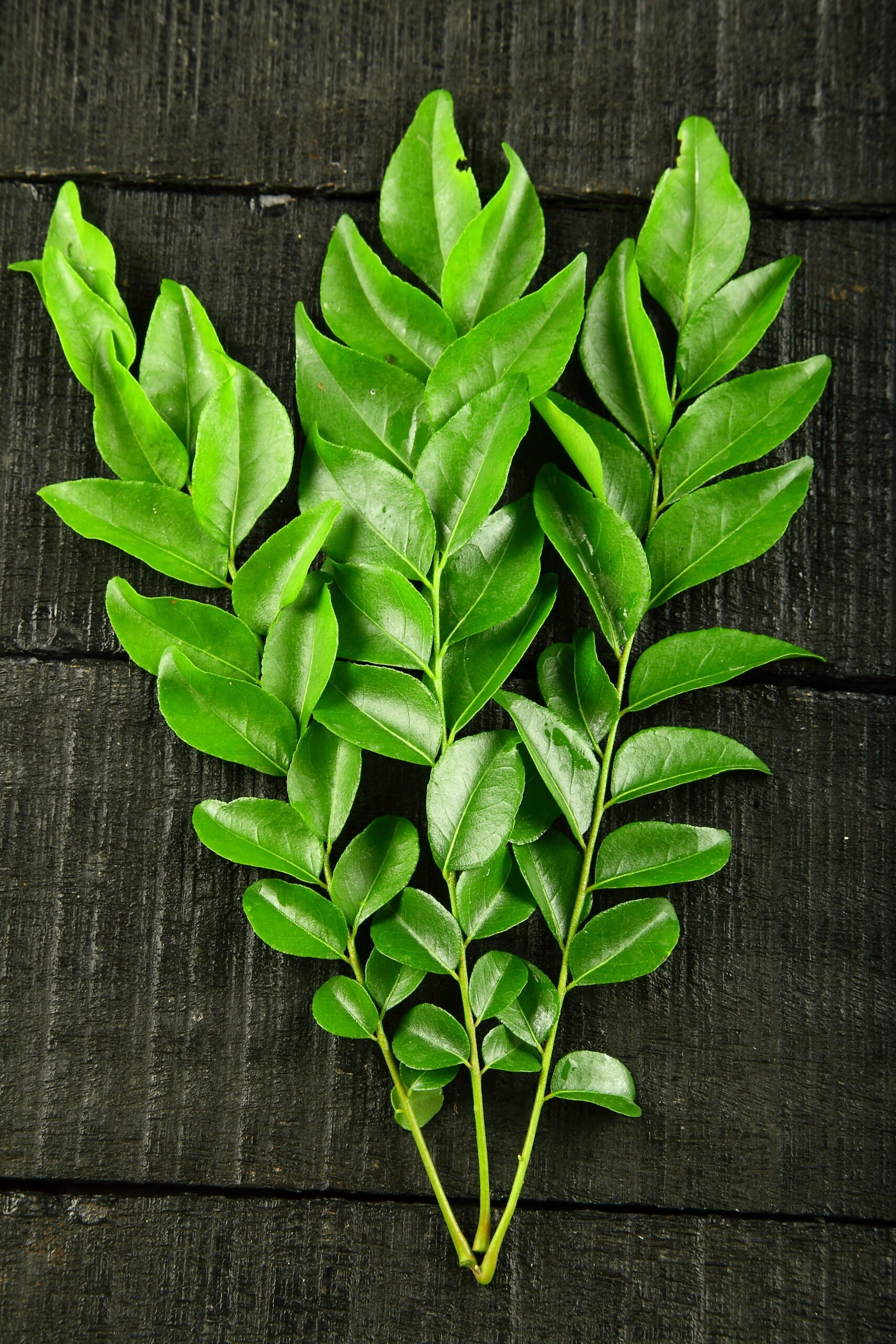
Tucked beside the turmeric jar or slipped into sizzling oil—curry leaves may look modest, but they pack a punch far beyond their size. These glossy green leaves are a staple in many South Asian kitchens, known not just for their aroma but for the unmistakable depth they add to food.
Whether you're crackling them in hot oil for a fragrant tadka or tossing them into a coconut-based stew, curry leaves aren’t just an afterthought—they're the soul of the dish. And their story goes way beyond the stovetop.
From cooking to wellness traditions, this small leaf has made a big impression across countries and cuisines. Let’s dive into what makes curry leaves so special.
What Are Curry Leaves?
Curry leaves are the aromatic leaves of the Murraya koenigii tree, native to South Asia. They’re not related to curry powder (despite the name) and have a flavor all their own, with an aroma that instantly wakes up a dish.
They’re a kitchen essential in many regional cuisines, especially in southern parts of the Indian subcontinent, and are now gaining popularity in global kitchens for both flavor and health benefits.
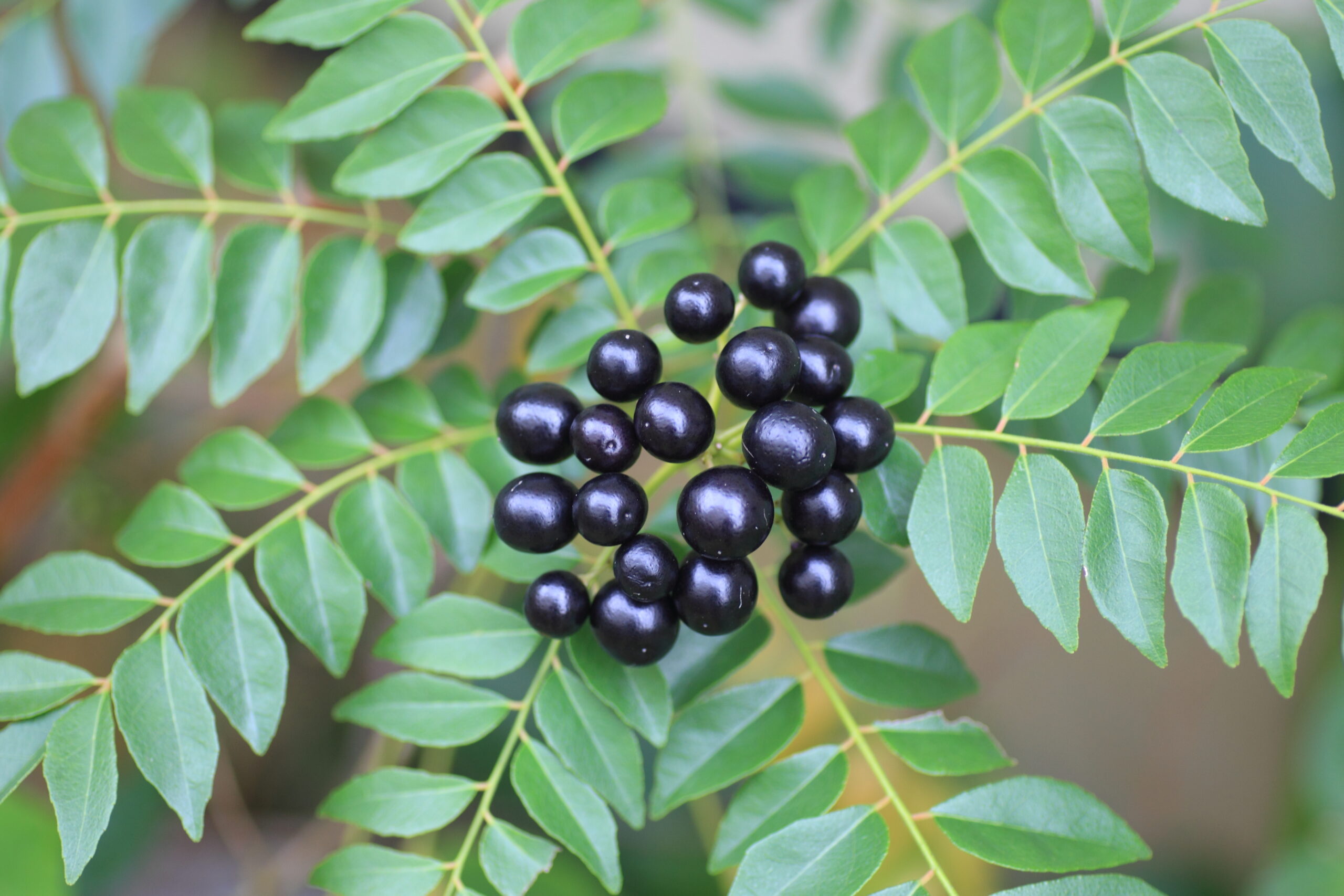
The curry tree’s berries aren’t for eating—but they’re key to growing this flavorful plant.
Popular Forms You’ll Find Them In
Curry leaves are available in a few different forms depending on where you are and how you plan to use them:
-
Fresh Leaves: These are the most flavorful and are usually sold in bunches. They’re soft, shiny, and deep green—perfect for tempering or tossing into hot oil to release their full aroma.
-
Dried Leaves: Easier to store, but they lose much of their fresh flavor. You can still use them in long-simmered dishes like soups or stews where they get time to infuse.
-
Curry Leaf Powder: Made from dried, ground leaves. It’s convenient for spice blends, marinades, or when fresh leaves aren’t available.
While fresh is always best for that bold pop of flavor, the other forms still come in handy—especially when you're cooking in a pinch.
What Do They Taste and Smell Like?
Curry leaves have a distinct citrusy and nutty aroma that hits the nose the moment they touch hot oil. Their scent is fresh and slightly spicy—like a mix of lemongrass, anise, and toasted herbs.
Taste-wise, they’re mild but complex. They add a warm, slightly bitter flavor with a subtle hint of citrus. Not overpowering, but definitely noticeable—especially when tempered in oil at the start of a dish. The flavor blends beautifully into dals, curries, chutneys, and even rice dishes.
In short? Curry leaves don’t scream for attention—but once they’re in a dish, you’d miss them if they weren’t.
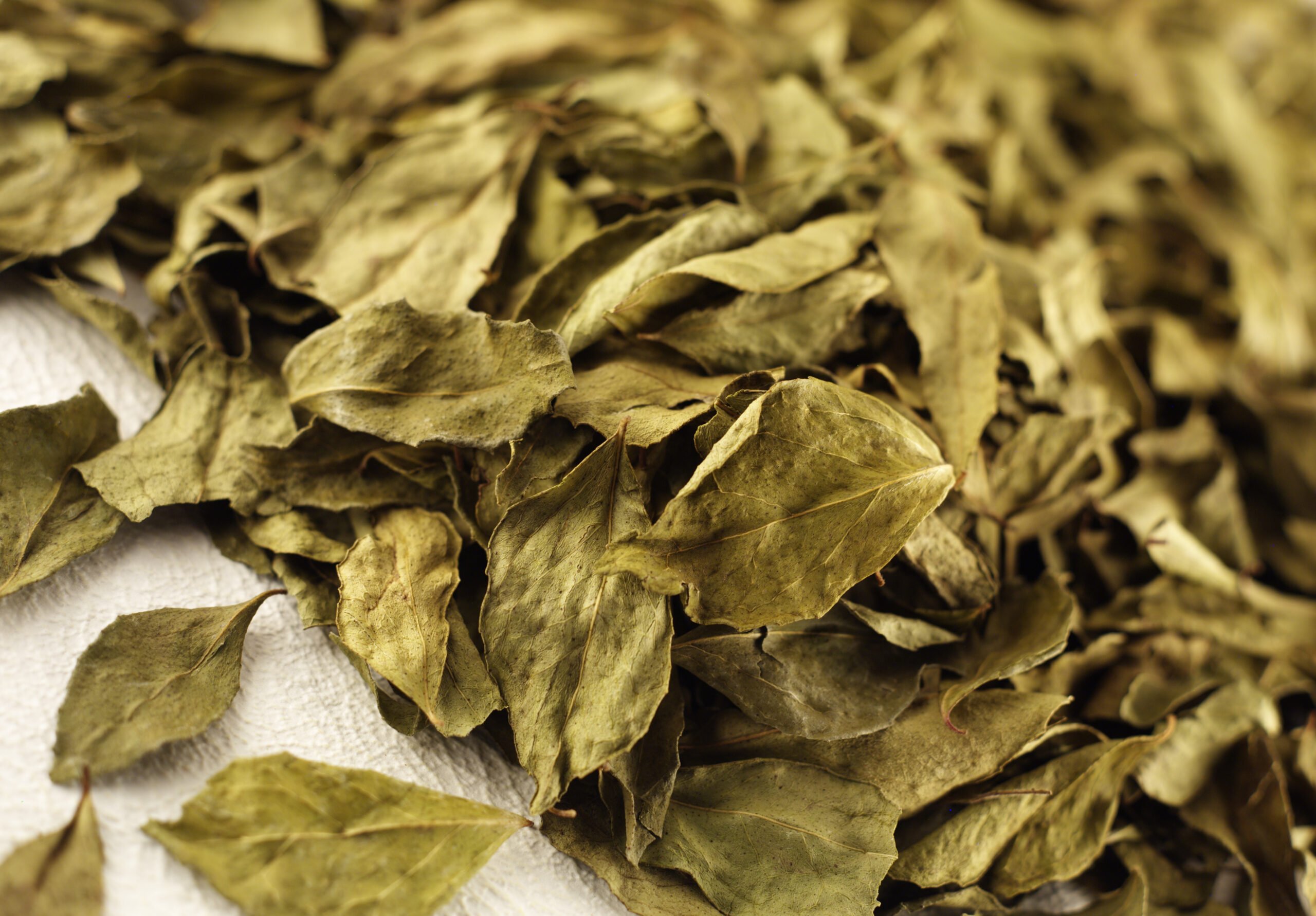
Nutritional Value (Per 100g)
Curry leaves may be small, but they pack a surprising punch when it comes to nutrition. Here's what 100 grams of fresh curry leaves typically offer:
-
Calories: ~108 kcal
-
Protein: ~6 g
-
Carbohydrates: ~18 g
-
Fiber: ~6 g
-
Fat: ~1 g
-
Iron: ~0.93 mg
-
Calcium: ~830 mg
-
Vitamin A: ~7560 IU
-
Vitamin C: ~4 mg
-
Magnesium, Phosphorus, and Zinc: In smaller but beneficial amounts
Thanks to their impressive calcium and vitamin A content.
Curry Leaves vs. Bay Leaves: Know the Difference
They might both be leaves, but that’s about where the similarities end.
Curry leaves are small, soft, and aromatic—used fresh or dried to add a subtle citrusy, slightly bitter flavor. They’re usually sautéed in oil at the beginning of a dish to release their fragrance and flavor.
Bay leaves, on the other hand, are tougher, larger, and used whole—often added during simmering and removed before serving. Their flavor is earthy, floral, and woody, commonly found in soups, stews, and biryanis.
In short:
-
Use curry leaves when you want aroma and a light citrus lift.
-
Use bay leaves for deeper, slow-cooked flavor.
And no—they’re not interchangeable.
Culinary Uses Around the World
Curry leaves may be native to South Asia, but their flavor has traveled far.
South Asia:
In Indian, Sri Lankan, and Pakistani kitchens, curry leaves are a staple. They're tossed into hot oil at the start of cooking dals, curries, sambar, rasam, and coconut chutneys—adding that signature aroma and depth.
Southeast Asia:
In Malaysian and Thai cooking, curry leaves often show up in spice pastes, seafood dishes, and even fusion recipes where bold flavors are welcome.
The Middle East & Africa:
Some regional dishes, especially in parts of Ethiopia and South Africa, use curry leaves alongside garlic, ginger, and chili for layered flavor bases in meat and lentil dishes.
Global Fusion:
As chefs around the world experiment, curry leaves now appear in flavored butters, bread, spice blends, and even cocktails. Their unique citrus-meets-spice taste is making them a global favorite.
Cooking with Curry Leaves
Curry leaves are more than just a seasoning—they’re a flavor essential in many beloved dishes.
Bloom them in oil:
Start by sizzling them in hot oil to release their signature nutty-citrusy aroma. This step forms the flavorful base of dishes like sambar, rasam, upma, and khichdi.
Must-haves in certain dishes:
Some recipes simply don’t taste right without them. Think of poha, lemon rice, kadhi, chutneys, and South Indian-style potato fry. Even a basic tadka dal feels incomplete without that quick crackle of curry leaves.
Dried or powdered forms:
While not as punchy, dried or powdered curry leaves can be used in masala blends, dry rubs, or sprinkled into soups and curries when fresh ones aren’t available.
Use them early, not late:
Add curry leaves at the beginning of cooking so their full aroma infuses the oil and base. Tossing them in at the end won’t do them justice.
Curry Leaves in Teas, Tonics, and Home Remedies
Beyond the sizzling tadka, curry leaves have long held a special place in traditional home remedies. From teas to tonics, they’ve been used to soothe the stomach, support hair growth, and even freshen breath.
One of the most popular uses? Curry leaf tea—made by boiling a handful of fresh leaves in water, sometimes with a dash of lemon or honey. It’s sipped for digestion, detox, or just a refreshing start to the day.
In some households, curry leaf juice or crushed paste is mixed with coconut oil and applied to the scalp to help reduce hair fall. Others blend the leaves into tonics or chew them raw in the morning for their antioxidant and iron-rich properties.
While these remedies are centuries old, many still swear by their benefits today. And the best part? They’re simple, natural, and come straight from the kitchen.
Quick Tips to Get the Best Out of Curry Leaves
-
Always use them fresh when you can: Fresh curry leaves have the strongest aroma. If they’re slightly wilted, a quick rinse and pat-dry can revive some of the scent.
-
Sizzle before you sprinkle: Fry the leaves briefly in hot oil or ghee before adding other ingredients. This helps release their full flavor.
-
Store them the smart way: Keep fresh leaves in an airtight container lined with paper towels in the fridge. Or freeze them if you need long-term use—they’ll still work well in cooked dishes.
-
Dry them for spice blends: Sun-dry or oven-dry curry leaves and grind them into chutney powders or spice mixes.
-
Don’t skip the stems for broths: While most recipes use the leaves, the stems can add subtle flavor to soups and stocks—just remove before serving.
Curry leaves are small but mighty. A few good practices can help you bring out their best in any dish.
How to Store Them Right
Fresh curry leaves are delicate but easy to store with the right approach:
-
Short-term: Wrap them in a paper towel and place them inside an airtight container or zip-lock bag. Store it in the refrigerator. They’ll stay fresh for about 1–2 weeks this way.
-
Long-term: Spread the leaves out and let them air-dry for a couple of days, or dry them in the sun. Once crisp, store in a dry, airtight jar for use in spice blends or garnishes.
-
Freezing option: Wash, dry thoroughly, and freeze them in a single layer. Once frozen, store them in freezer-safe bags. They’ll lose a bit of texture but still pack flavor when cooked.
Keep them away from moisture and light, and you’ll always have curry leaves on hand when your recipe calls.
Health Benefits of Curry Leaves
Curry leaves aren’t just for flavor—they may offer several wellness perks too. Here’s what these aromatic leaves might bring to the table:
-
May support better digestion: Traditionally used to soothe upset stomachs, curry leaves may help stimulate digestive enzymes and ease bloating (Source).
-
Can help regulate blood sugar: Some studies suggest they might assist in managing blood sugar levels by improving insulin function (Source).
-
May aid in weight management: The fiber and antioxidants in curry leaves can support metabolism and help curb unwanted weight gain (Source).
-
Good for hair and skin: Rich in antioxidants and vitamins A, B, C, and E, they’re often used in natural remedies to strengthen hair and improve skin health (Sources 1, 2).
-
Supports heart health: Curry leaves contain compounds that may help reduce bad cholesterol levels and support overall heart function (Source).
While these benefits are promising, it’s important to remember that curry leaves are a supplement—not a substitute—for medical treatment. Enjoy them as part of a balanced diet and let their flavor and potential benefits work hand in hand.
Final Thoughts
Curry leaves may be small, but they play a big role in both flavor and tradition. Whether you’re using them fresh or dried, they add a subtle depth to everyday dishes and carry centuries of culinary and medicinal use behind them. While fresh leaves can be hard to come by outside South Asia, dried ones still offer a gentle aroma and are a great way to explore their unique character.
If you haven’t cooked with them yet, they’re worth getting to know—simple to use, full of history, and surprisingly versatile.
FAQs
1. Can I eat curry leaves raw?
Yes, you can. Many people chew them for their potential health benefits, especially for digestion and hair health.
2. How many curry leaves should I use in cooking?
A small handful (8–10 leaves) is usually enough to flavor most dishes like dals, curries, or rice.
3. Are curry leaves and bay leaves the same?
No, they’re completely different in flavor, aroma, and origin. Curry leaves are citrusy and herbal, while bay leaves are woody and mild.
4. Can I grow curry leaves at home?
Yes! They grow well in warm climates or indoors in pots with plenty of sunlight and well-drained soil.
5. Do dried curry leaves taste the same as fresh?
Not quite. Dried leaves lose much of their flavor, so fresh curry leaves are always preferred for that signature taste.
Learn More About Curry Leaves
Wikipedia – Curry Tree
This article on the Curry tree (Murraya koenigii) explaining the plant's botanical background, native regions, and the culinary role of curry leaves, their growth and propagation, and also mentions the role of small black berries the tree produces.
Healthline – 9 Benefits and Uses of Curry Leaves


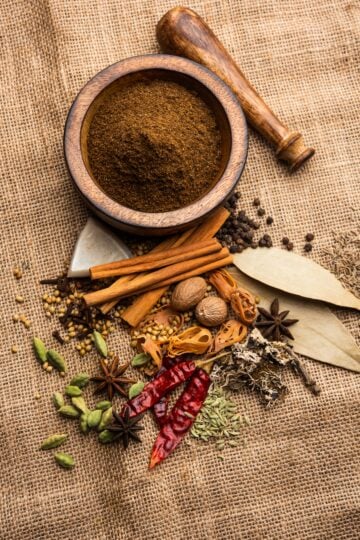
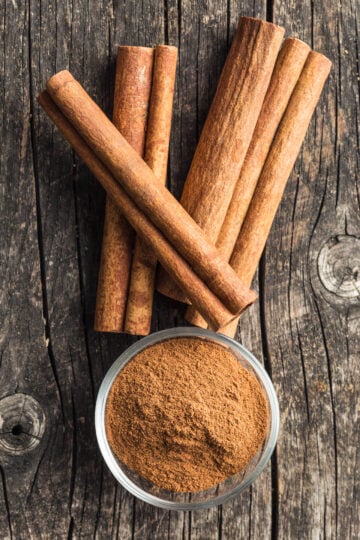
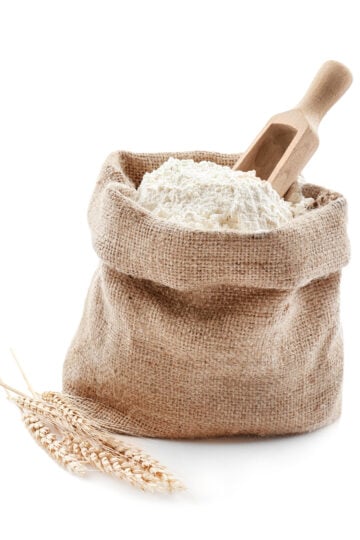
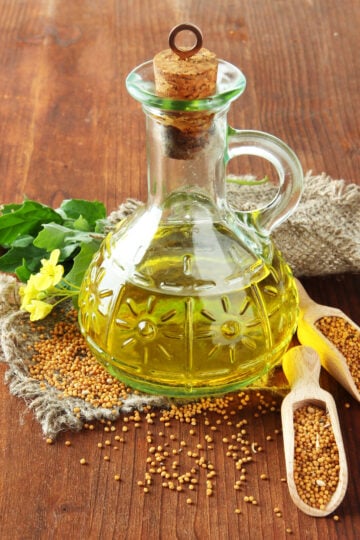
Have a question or something to share? Leave a comment below!